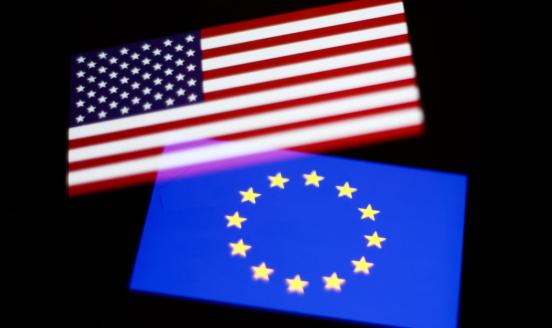China's strategy: Growth, alliances, and tech acquisition
Despite the pause in the US-China trade war, the US and China are strategic competitors, and will continue to be so for the foreseeable future. China
The truce agreed to by China and the US at the sidelines of the G20 meeting in Buenos Aires does not change the US’ ultimate goal to contain China. The reason is straightforward: the US and China have become strategic competitors and will continue to be so for the foreseeable future, leaving little room to settle any long-term disputes. China’s recognition of the structural features of the US-led trade war has also brought about a drastic change in its response to US policy. From tit-for-tat tactics based on retaliatory measures on trade, China has shifted to a three-pronged strategy: sustaining domestic growth at any cost, finding alliances externally, and accelerating China’s technological capacity.
First and foremost, China needs to cushion the deceleration in economic growth, especially after deceleration intensified in 2018 following the US-led trade war. So far, 2018 has seen an easing in monetary policy and a half-hearted attempt at a fiscal stimulus, but those have clearly not been enough to stop economic deceleration. In fact, the ¥1.3 trillion cuts in taxes do not seem to have been effective in stimulating the economy. Fiscal expenditure has not expanded, either, which may be related to the central government’s tighter controls on local governments’ investments and the clamp down on shadow banking, as well as the fear of Xi Jinping’s anticorruption campaign. On the monetary side, the liquidity injected by the People’s Bank of China (PBoC) for the purpose of lowering the cost of funding across the board has not been effective beyond the money market. In fact, private companies have not profited much from the reduction in the cost of funding.
Given the above, and the increasingly worrisome data on investment and even consumption, China has no choice but to pull out all the stops and attempt to stimulate the economy. On the fiscal front, China is coming back to a quick fix, specifically by increasing infrastructure investments and allowing local governments to take out larger loans. On the monetary side, the key for the PBoC is to improve the transmission mechanism of its monetary actions so that the private sector gets access to cheaper credit. In that regard, the PBoC is expected to do "whatever it takes” to support growth, which basically means pushing credit towards the private sector. Given the size of the stimulus, China should be able to achieve a stabilisation of growth or, at least a moderate deceleration in 2019. This will constitute the best response to US containment, but we cannot forget that the sustainability of such growth is the key question mark down the road. In fact, leverage can only increase, as the economy is stimulated through demand policies once again. The reason, beyond China’s structural and cyclical deceleration, is to stem off the trade war’s extremely negative impact on market sentiment, which has had rippling effects on investment and the consumption of durable goods.
Beyond growth, China has two key external objectives. First, it needs to embrace more alliances, especially with the larger economies of the world. The European Union (EU) is the most obvious target, as its economic size as a bloc, is comparable to that of the US or China. This explains China’s recent push to improve its economic relations with the EU, but also with individual member states. For example, the so-called “16+1” platform, composed of 16 Eastern European and Balkan countries, endeavors to deepen bilateral relations with the countries in that region. President Xi’s recent trip to Spain and Portugal also highlights China’s attentiveness to EU member states. The recently improved relationship with Japan is also indicative of China’s frantic quest for alliances. In any event, attempts from Europe or Japan to rebalance their strategic alliances in favor of a closer relationship with China will become increasingly unsuccessful, as the US may introduce constraints on its allies’ ability to engage with China. NAFTA’s “poison pill,” which requires countries to inform one another of intentions to enter into free-trade agreements with a nonmarket economy, is an obvious reference to China.
China’s second external objective is to achieve self-reliance by reducing its technology gap with the developed world, which could be achieved faster by purchasing technology abroad. This should push China’s merger and acquisition (M&A) activity to a new high, at least in the sectors targeted in China’s medium-term industrial strategy, such as China Manufacturing 2025. The increasingly wary attitude of the U.S administration makes the EU an easy partner, although protecting against China’s M&A is also on the rise in the EU.
All in all, competition with the US and the US’s push to contain China has led Chinese authorities to respond with an overarchingly vague strategy rather than with concrete, measurable tactics. This tension has characterised Sino-American bilateral relations since the beginning of the year. Now, China is focused on building external alliances, pushing domestic growth at all costs, and accelerating technological self-reliance.




